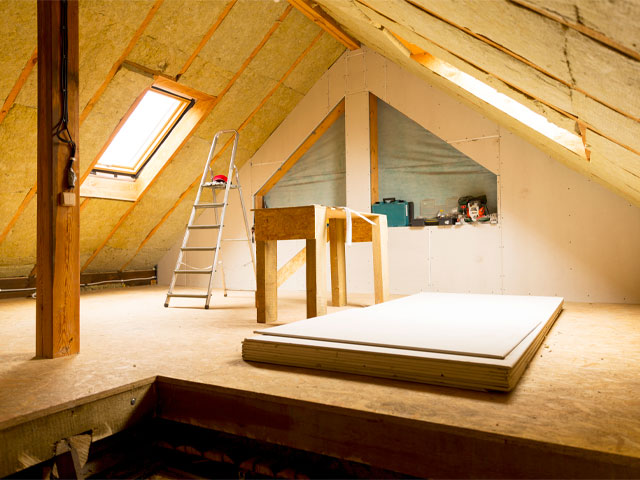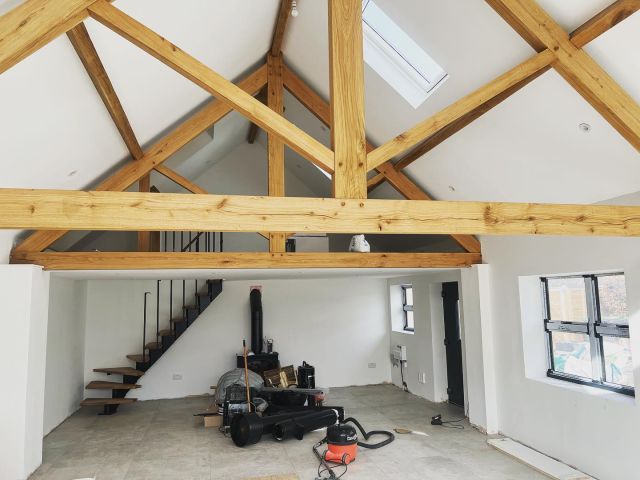
Loft conversions have become increasingly popular as homeowners seek to maximize their living space without the need to relocate. This renovation can transform underutilized attic areas into functional rooms, adding value and appeal to your home. However, not every house is equally suited for a loft conversion. The success of such a project largely depends on the type of home you have. In this blog post, we will explore which types of homes are best for loft conversions and what factors to consider to ensure a successful transformation.
1. Victorian and Edwardian Terraced Houses
Victorian and Edwardian terraced houses are often ideal candidates for loft conversions. These homes typically feature steeply pitched roofs with ample headroom in the attic space. The architectural design of these properties frequently includes features such as dormer windows and gabled ends, which can be leveraged to create additional living space. For further help, tips, and advice about loft conversions, feel free to visit https://loftconversion.london/ to learn more.
Key Advantages:
- High Roof Ridge: The steep pitch of Victorian and Edwardian roofs provides more headroom, making it easier to convert the attic into a usable space.
- Structural Integrity: These homes were built with strong, durable materials, which can support the additional weight of a loft conversion.
Considerations:
- Planning Permissions: You may need to obtain planning permission, especially if the conversion involves altering the roofline or adding windows.
2. Semi-Detached Houses
Semi-detached houses also lend themselves well to loft conversions. These properties usually have more space in the attic compared to their terraced counterparts, as they are not constrained by adjacent properties on both sides.
Key Advantages:
- Additional Space: The extra space available in a semi-detached house’s attic can be beneficial for creating a more spacious loft conversion.
- Ease of Access: The layout of these homes often allows for easier access to the loft area, which simplifies the conversion process.
Considerations:
- Roof Structure: Ensure that the roof structure is strong enough to support the new floor and any additional weight.
3. Detached Houses
Detached houses offer the most flexibility when it comes to loft conversions. With no immediate neighbors, there is often more freedom to modify the roofline and make structural changes.
Key Advantages:
- Versatility: Detached homes typically have larger attic spaces and can accommodate a wide range of loft conversion designs.
- Privacy: Since these homes are not attached to others, there’s more freedom to make alterations without affecting neighboring properties.
Considerations:
- Cost: The cost of converting a loft in a detached house may be higher due to the larger space and the potential need for more substantial structural work.
4. Bungalows
Converting a bungalow’s loft can be more challenging compared to other types of homes. Bungalows usually have lower rooflines and less headroom in the attic, which can limit the scope of the conversion.
Key Advantages:
- Potential for Expansion: If you’re willing to invest in significant structural changes, bungalows can potentially benefit from a loft conversion by adding valuable living space.
Considerations:
- Headroom and Structure: The primary challenge with bungalows is often the lack of headroom and the need for extensive structural modifications to create a usable loft space.
5. Modern Homes
Modern homes, particularly those built in the latter half of the 20th century, often have roof structures that are more conducive to loft conversions. Many modern homes are designed with a greater emphasis on space and flexibility.
Key Advantages:
- Design Flexibility: Modern homes often feature roof designs that can easily accommodate loft conversions.
- Energy Efficiency: Newer homes may already have better insulation and energy efficiency, which can be an advantage during and after the conversion process.
Considerations:
- Building Codes: Ensure that the conversion complies with current building codes and standards.

Factors to Consider for Any Home
Regardless of the type of home, several factors should be considered when planning a loft conversion:
1. Headroom
The amount of headroom in the loft space is crucial. Ideally, you need at least 2.2 meters (7 feet 3 inches) of headroom at the highest point. This ensures that the converted space is comfortable and functional.
2. Roof Structure
The existing roof structure will influence the complexity and cost of the conversion. Homes with traditional timber trusses may require more extensive modifications compared to homes with modern roof designs.
3. Planning Permissions
Always check local building regulations and planning permissions before starting a loft conversion. Regulations can vary depending on your location and the specifics of the conversion.
4. Access
Consider how you will access the loft. A staircase is essential for a loft conversion, and its placement can impact the layout and functionality of the converted space.
5. Natural Light
Incorporating natural light into the loft space can enhance its usability. Roof windows or dormer windows are common solutions to improve lighting and ventilation.
6. Budget
Finally, consider your budget. Loft conversions can range from relatively affordable projects to significant investments, depending on the complexity and scope of the work.
Conclusion
Loft conversions can be a fantastic way to add space and value to your home, but their success largely depends on the type of home you have and the specific characteristics of your attic space. Victorian and Edwardian terraced houses, semi-detached houses, and detached homes generally offer the best conditions for loft conversions, while bungalows and certain modern homes may require more extensive planning and modifications.
By carefully considering the factors outlined above and working with a professional contractor, you can ensure that your loft conversion meets your needs and enhances your living space. Whether you’re looking to add an extra bedroom, a home office, or a cozy retreat, a well-executed loft conversion can be a valuable investment in your home’s future.
